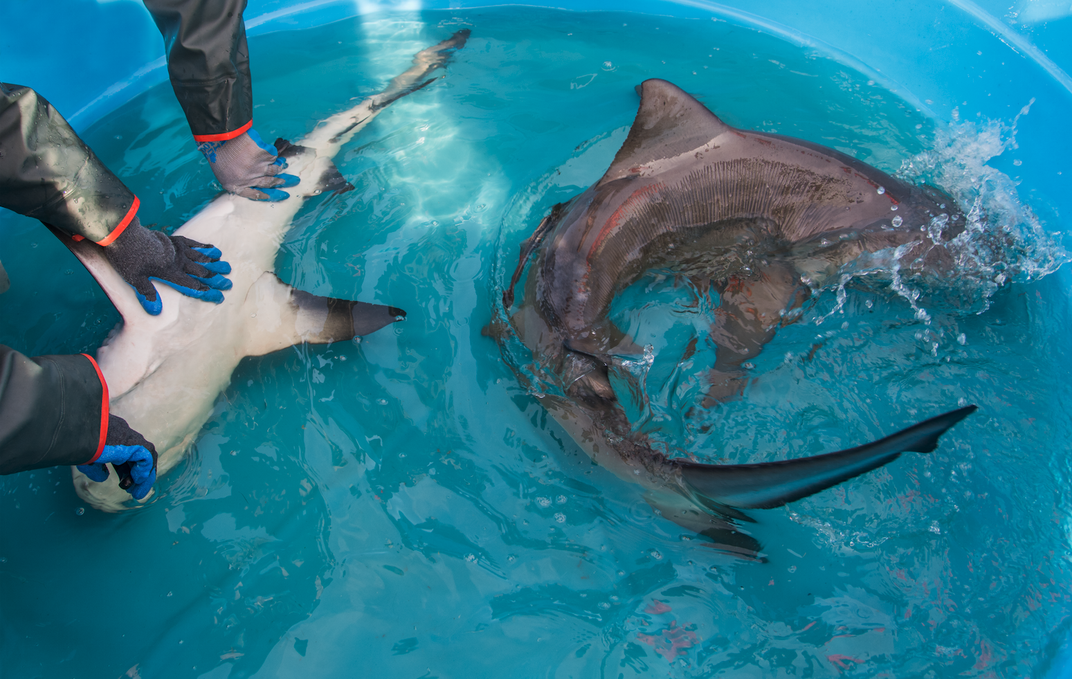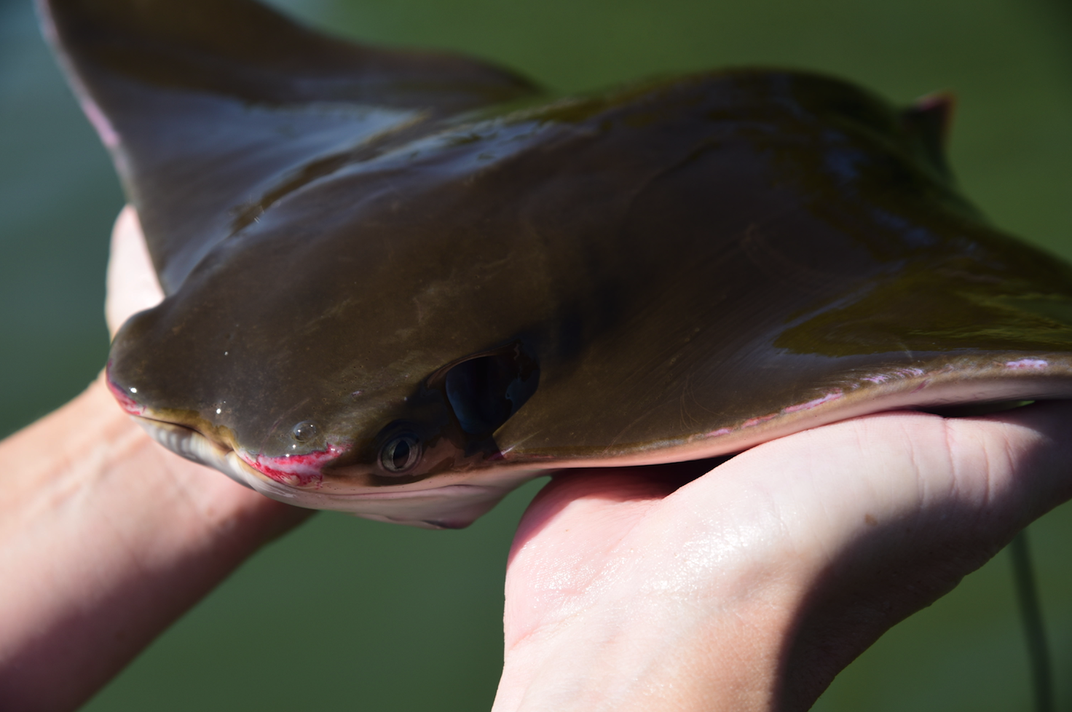Marine Migrations, Key to Climate Change Predictions and Conservation Efforts
By tracking rays, sharks and river herring, the Fish and Invertebrate Ecology lab at the Smithsonian Environmental Research Center is working to figure out how marine migration data could help predict marine species’ responses to climate change and aid in the conservation of endangered ones.
/https://tf-cmsv2-smithsonianmag-media.s3.amazonaws.com/blogging/featured/Captura_de_pantalla_2018-09-21_a_las_10.24.59.png)
A few weeks ago, the Fish and Invertebrate Ecology lab at the Smithsonian Environmental Research Center (SERC) made the news. For the first time, cownose rays were tracked as they migrated along the Atlantic Coast of the U.S., revealing their wintering habitat. These large stingrays arrive in the Chesapeake Bay every summer to mate and reproduce, and migrated to a previously unknown location when autumn rolled around.
Now, data from a three-year tagging study led by SERC scientists, and published in Marine Ecology Progress Series, suggests that they travel all the way to Cape Canaveral in Florida when it gets cold, but return to the same spots each summer. Cownose rays can easily be overfished, so this piece of information is crucial for the creation of a management plan for the species, such as the one Maryland officials are looking to develop.
“We really needed to know how closely tied they are to individual places; if the same rays return to the same place or if they just go somewhere random and different each summer,” explained Matt Ogburn, SERC marine ecologist and lead author of the study. “If you don’t know the answer to that question, you don’t know how to manage them.”
The rays were tracked using acoustic transmitters. Hundreds of receivers along the Atlantic Coast picked up their signals as they swam by. Without the collaborative data sharing networks of researchers along the Atlantic Coast, including the Atlantic Cooperative Telemetry Network and the Florida Atlantic Coast Telemetry Network, this kind of research wouldn't have been possible.
As the marine arm of the Smithsonian Conservation Commons’ new Movement of Life (MOL) initiative, the Fish and Invertebrate Ecology lab leads many other projects aimed at understanding a wide variety of migratory species that move in and out and around East coast estuaries and along the Atlantic Coast, among them: a few species of sharks.
Sharks, and other migratory species are expected to be some of the first responders to climate change. So SERC targeted animals with variable prey and habitat preferences for tracking—bull sharks, smooth dogfish and blacktip sharks—looking to predict the reaction of entire communities to climate change. Some have already begun reacting. This spring, Charles Bangley, a postdoctoral fellow at the Fish and Invertebrate Ecology lab published a paper showing that, in the past five years, bull sharks have shifted their nursing grounds from Florida to North Carolina.
The dusky shark, the most threatened along the Atlantic Coast of the United States, is being tracked as well. Although fishing dusky sharks is banned, there is enough accidental bycatch to cause slow population recovery. Tracking data for the species could help identify important habitats and environmental conditions that fishermen should steer clear of.
Bangley has also been working on a shark survey in the Cape Fear River in North Carolina for the past two summers, with support from the N.C. Aquarium Society. It was last done in the seventies, at a time of heavy fishing in the Atlantic Coast. The data gathered will reveal changes in shark populations in the estuarine environment compared to four decades ago, updating the type of species present and documenting any seasonal variations related to climate change.
Aside from sharks and rays, Ogburn has an eye on river herring, a threatened species that spawns in the Chesapeake Bay, but disappears during the summer. A target of conservation efforts, tracking data would reveal their habitat in the ocean and the best ways for fisheries to avoid catching them. They are also quite responsive to climate change. Understanding how temperature influences their migration would help predict how warming oceans may affect their whereabouts.
In the long term, the Fish and Invertebrate Ecology lab at SERC is interested in understanding the critical roles that movement plays in ecosystems. By studying both prey and predator species, it aims to grasp their interactions, as well as the importance of movement to their survival and to their ecosystems. Humans, inescapably, are part of the equation, as scientists hope to determine their potential impact over the movement of marine species and how it could affect marine life through time.
The Conservation Commons is an action network within the Smithsonian Institution (SI), highlighting the relevance of science and innovative interdisciplinary approaches across science and culture to on-the-ground conservation worldwide.



